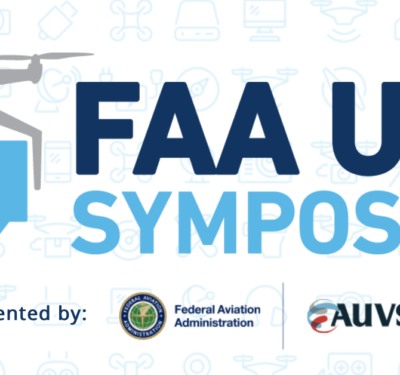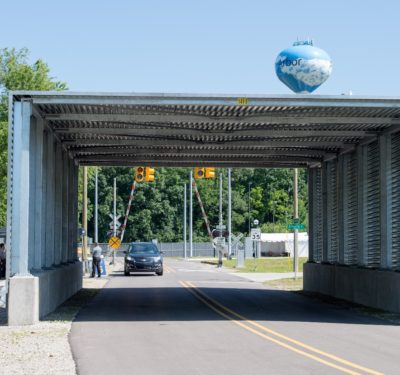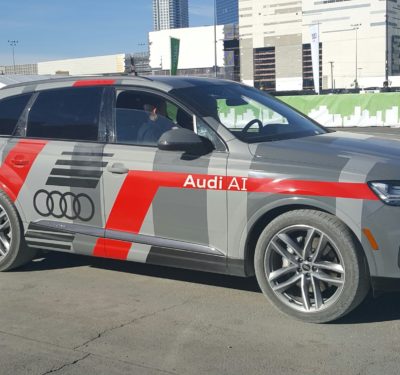
Connected and Automated Driving (CAD) a key topic for discussion at the 25thITS World Congress
Connected and Automated Driving (CAD) is evolving quickly thanks to innovations such as 5G, Internet of Things (IoT) technology, and artificial intelligence. As a result, CAD is expected to increase safety, maximise comfort and stimulate business opportunities for a range of mobility services in the coming years, and the market size is expected to reach 50% market penetration by 2035.
In light of this, it is no surprise that CAD will be a key topic for discussion at the 25thITS World Congress in Copenhagen, which will showcase the latest connected and automated mobility developments and demonstrations. The intelligent transport systems and services event is scheduled for Sept. 17-21 at the Bella Centre, the largest congress and exhibition venue in Scandinavia.
“Connected, cooperative and automated transport is experiencing rapid technological growth. There is no doubt that this development will influence mobility and urban living over the coming decade,” said Steffen Rasmussen, Head of Projects, at Copenhagen’s Technical and Environmental Administration, in a press release. “It is immensely important to maintain dialogue and cooperation between the private and public sector to ensure that this development improves people’s quality of life and continues the trend towards healthy, liveable and green cities.”
Enabling CAD
Connected and Automated Driving broadly describes the increased connectivity and automation between vehicles and their environment, enabled by IoT technology, which is all about connecting and networking objects or “things”.
By 2020 an IoT network of around 50 billion objects is expected to exist worldwide, which will have a huge impact on connected mobility. Projects such as AUTOPILOT, coordinated by ERTICO, the multisector public-private partnership of 121 companies and organizations, are already harnessing IoT sensor technology in large-scale pilot programs across Europe to facilitate automated driving, automated parking, autonomous car sharing and more.
Another important technology facilitating the advancement of CAD is 5G. The next-generation data network will pave the way for cellular vehicle-to-everything (C-V2X), which is designed to make vehicles smarter and more connected than ever before. 5G and IoT will be big topics at the ITS World Congress. To find out more and get ahead of the curve, attend plenary session 3, which will seek answers to the question: What’s next for automated mobility?
Truck Platooning
While self-driving cars may grab the headlines, one of the most exciting and impactful applications of CAD is truck platooning. Truck platoons are equipped with vehicle-to-vehicle (V2V) technology which allows them to communicate and travel closely together.
There are numerous benefits to platooning – it increases safety and reduces fuel consumption and CO2emissions. Platooning and other CAD innovations will also help reduce congestion and could help avoid structural problems on Europe’s main transport corridors. These and other benefits of platooning and stand-alone automated trucks will be discussed at the workshop: Transforming Freight Movement through ITS.
Dynniq will display a number of key projects from their Cooperative Corridor portfolio at the Congress, which will include a discussion of the Cooperative & Connected Services Platform (CCSP), which enables communication between vehicles and roadside units. Speaking about the wide-ranging impacts of CAD, Cees de Wijs, CEO of Dynniq said: “In order to keep European ports accessible, new solutions like truck platooning and remotely controlled speed advice are needed. This improves flow, safety, and reduces carbon emissions, avoiding one the major sources of congestion and incidents with heavy goods vehicles.”
Challenges Ahead
As wireless communication is a vital enabling technology for CAD, it is important for the automotive and telecommunications industries to work closely together. François Fischer, Senior Manager for Connected and Automated Driving at ERTICO notes that, in addition to legal and institutional challenges, one of the main challenges for CAD deployment is the different paces that the automotive and IT industries are moving at. “Telecommunications products have a much shorter life-cycle than vehicles do, which means that finding a way to integrate the two industries is key for delivering CAD,” he said.
To learn more about the challenges facing CAD, attendees can visit the executive sessions Delivering Effective Cooperative, Connected and Automated Mobility and The Role of Open Data in the Digital Infrastructure.
CAD in Action
CAD technology is now reaching a stage of maturity in many areas and there will be plenty of opportunities to see it in action at the ITS World Congress. The conference boasts a range of demonstrations which will showcase some of the exciting innovations in connected and automated mobility. These include:
- a demonstration by Swarco of its autonomous valet parking service;
- the Urban Jungle, where several autonomous shuttle services will traverse static and dynamic obstacles;
- NordicWay 2’s demonstration of C-ITS traffic management capabilities;
- C-MobILE’s showcase of interoperable C-ITS systems;
- a demonstration from Keolis of the first autonomous cab available on the market.
A full agenda can be found on the ITS World Congress site. For the latest information on the Congress app and demonstrations please sign up to the Congress newsletter.
To register to attend the Congress, click here.






